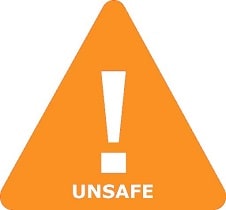Is Anti-CTLA4 Safe in Breastfeeding
Question
I am a breastfeeding mother and i want to know if it is safe to use Anti-CTLA4? Is Anti-CTLA4 safe for nursing mother and child? Does Anti-CTLA4 extracts into breast milk? Does Anti-CTLA4 has any long term or short term side effects on infants? Can Anti-CTLA4 influence milk supply or can Anti-CTLA4 decrease milk supply in lactating mothers?
Anti-CTLA4 lactation summary

- DrLact safety Score for Anti-CTLA4 is 5 out of 8 which is considered Unsafe as per our analyses.
- A safety Score of 5 indicates that usage of Anti-CTLA4 may cause serious side effects in breastfed baby.
- Our study of different scientific research indicates that Anti-CTLA4 may cause moderate to high side effects or may affect milk supply in lactating mother.
- Our suggestion is to use safer alternate options rather than using Anti-CTLA4 .
- It is recommended to evaluate the advantage of not breastfeeding while using Anti-CTLA4 Vs not using Anti-CTLA4 And continue breastfeeding.
- While using Anti-CTLA4 Its must to monitor child for possible reactions. It is also important to understand that side effects vary largely based on age of breastfed child and time of medication in addition to dosage.
- Score calculated using the DrLact safety Version 1.2 model, this score ranges from 0 to 8 and measures overall safety of drug in lactation. Scores are primarily calculated using publicly available case studies, research papers, other scientific journals and publically available data.
Answer by Dr. Ru: About Anti-CTLA4 usage in lactation
G1K-immunoglobulin recombinant monoclonal antibody is indicated in certain cases of melanoma. Its high molecular weight explains the observed very low-excretion into breastmilk (Ross 2014). Its low oral bioavailability hinders the passage from ingested milk towards the infant’s plasma, except in preterm babies and immediate neonatal period, which may show an increased intestinal permeability. Although possibly safe during lactation, a long elimination half-life span (14.7 days) and its serious side effects (Beck 2006, Araujo 2015) make it necessary not to breastfeed until more data on this drug are available.The period for “washout" (obligatory time period for the drug to be completely eliminated from the body) that should be observed before resuming breastfeeding would be 74 days (5 times half-life period) after the last dose.A woman who nursed her infant after 21 days from the last dose (Ross 2014) did not report side effects in the infant.
Answer by DrLact: About Anti-CTLA4 usage in lactation
The amount of Anti-CTLA4 in breastmilk appears to be very low, but it may increase with subsequent doses during a treatment cycle. Absorption from the infant's gastrointestinal tract is unknown. Because Anti-CTLA4 is a large protein molecule with a molecular weight of 148,000, absorption is unlikely after the first few weeks postpartum, and it will probably be destroyed in the infant's gastrointestinal tract. Until more data become available, Anti-CTLA4 should be used with caution during breastfeeding, especially while nursing a newborn or preterm infant. The manufacturer recommends that breastfeeding be discontinued during Anti-CTLA4 therapy and for 3 months after the last dose. Anti-CTLA4 is a human immunoglobulin G1 (IgG1) kappa antibody. Holder pasteurization (62.5 degrees C for 30 minutes) decreases the concentration of endogenous immunoglobulin G by up to 79%.[1][2] A study of 67 colostrum samples that underwent Holder pasteurization found that IgG amounts decreased by 34 to 40%. Specific IgG subclasses decreased by different amounts, with IgG1 activity decreasing by about 37%.[3] None of the studies measured IgG activity.
Anti-CTLA4 Side Effects in Breastfeeding
A woman with recurrent malignant melanoma was treated with Anti-CTLA4 3 mg/kg intravenously over 90 minutes once every 3 weeks for 4 doses, beginning soon after delivery. She began breastfeeding 21 days after her 12 weeks of therapy was completed. At 30 weeks after treatment she was well, but no mention was made of the duration of breastfeeding or the health of her infant.[4]
Alternate Drugs
Ranibizumab(Safe)
Denosumab(Low Risk)
Omalizumab(Low Risk)
Infliximab(Safe)
Ipilimumab(Unsafe)
Rituximab(Low Risk)
Secukinumab(Low Risk)
Nivolumab(Unsafe)
Abciximab(Low Risk)
Bevacizumab(Low Risk)
Basiliximab(Low Risk)
Belimumab(Low Risk)
Brentuximab Vedotin(Low Risk)
Natalizumab(Low Risk)
Ustekinumab(Low Risk)
Trastuzumab(Unsafe)
Cetuximab(Unsafe)
Certolizumab Pegol(Safe)
Erlotinib(Unsafe)
Paclitaxel(Dangerous)
Doxorubicin(Dangerous)
Bleomycin(Dangerous)
Cyclophosphamide(Dangerous)
Cladribine(Dangerous)
Imatinib(Unsafe)
Vinorelbine(Dangerous)
Cisplatin(Unsafe)
Dacarbazine(Dangerous)
Fluorouracil(Dangerous)
Busulfan(Dangerous)
Azelaic Acid(Safe)
Alemtuzumab(Low Risk)
Ipilimumab(Unsafe)
Gemcitabine(Dangerous)
Thioguanine(Dangerous)
Rituximab(Low Risk)
Bevacizumab(Low Risk)
Dasatinib(Unsafe)
Docetaxel(Dangerous)
Nilotinib(Unsafe)
Vincristine(Dangerous)
Tamoxifen(Dangerous)
Mitoxantrone(Dangerous)
Nivolumab(Unsafe)
Pazopanib(Unsafe)
Mercaptopurine(Safe)
Dactinomycin(Dangerous)
Trastuzumab(Unsafe)
Cetuximab(Unsafe)
Letrozole(Dangerous)
Vinblastine(Dangerous)
Exemestane(Dangerous)
Hydroxyurea(Low Risk)
Carboplatin(Dangerous)
Etoposide(Dangerous)
Ipilimumab(Unsafe)
Nivolumab(Unsafe)
Ipilimumab(Unsafe)
Nivolumab(Unsafe)
Ipilimumab(Unsafe)
Glatiramer(Low Risk)
Nivolumab(Unsafe)
